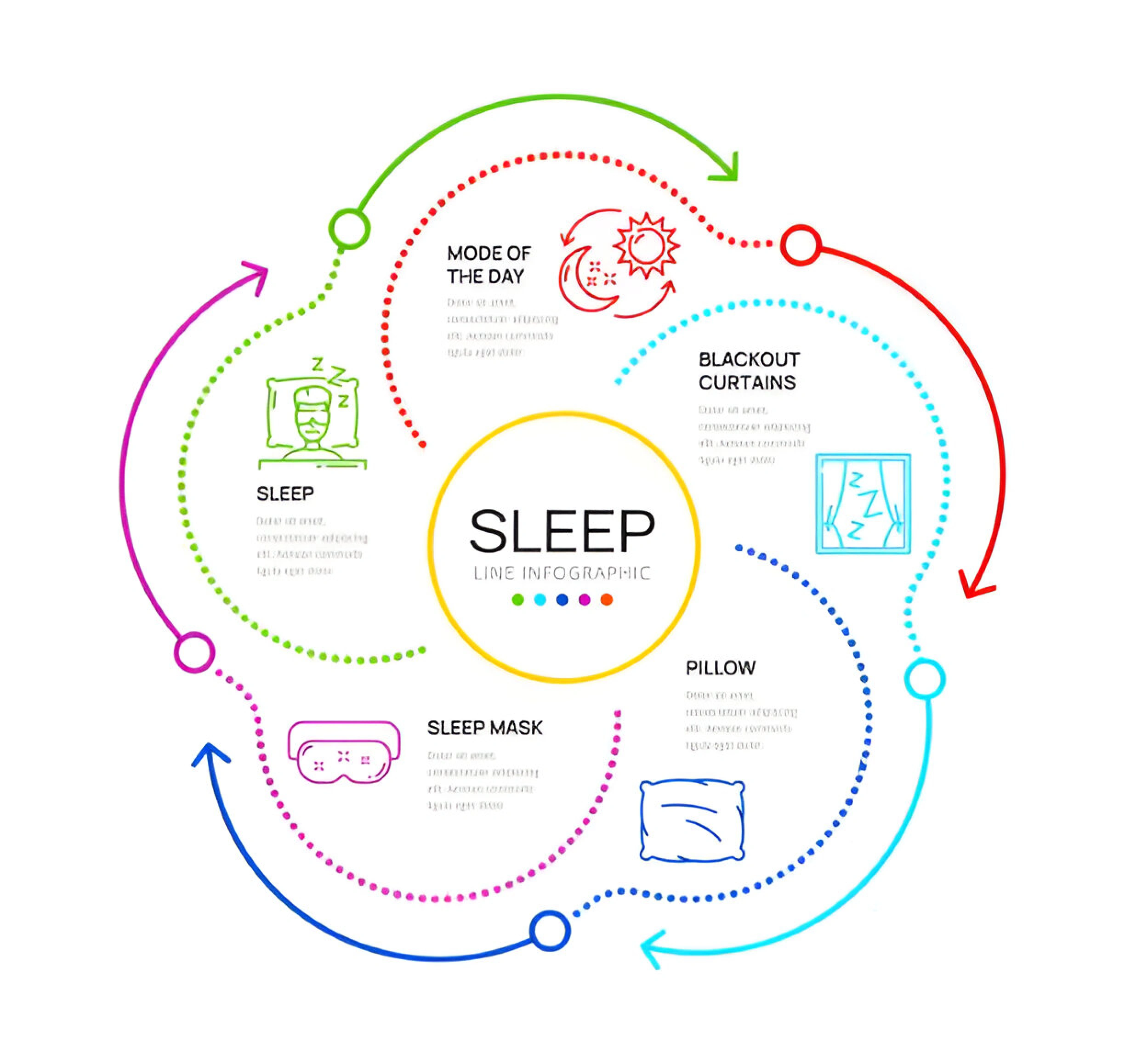It’s amazing how quickly life changes when you’re caring for a 2-month-old. Just when you think you’ve got it all figured out, their sleep patterns throw you for a loop! Creating a two month old sleep schedule might feel like piecing together a puzzle—but don’t worry, you’re not alone. I’ve been there, wondering why my baby was waking up at odd hours or struggling to nap during the day.
In this guide, we’ll talk about simple, practical ways to help your baby and you! get better rest. Whether it’s using a cozy baby sleep sack or finding the balance between feeding and naps, I’m here to share tips that worked for me and can work for you too. Let’s get started!
Why Sleep Schedules Matter for a 2-Month-Old Baby
You might be wondering, “Does a sleep schedule really matter at this age?” The short answer is yes but not in the rigid, clock-watching way you might expect. At 2 months old, babies are still figuring out the world, and their sleep is all over the place. Helping your little one settle into a flexible 2-month-old sleep schedule can make a big difference for their growth, mood, and even your sanity.
Think of sleep as your baby’s reset button—it’s when they process the sights and sounds of the day, store memories, and grow (literally!). A consistent sleep routine not only supports their brain development but also helps them feel secure. And let’s be honest, a well-rested baby means fewer cranky cries and more happy coos during playtime.
Here’s where feeding comes in. A balanced 2-month-old baby feeding and sleeping schedule ensures your little one is well-fed and ready to drift off when they need it. Trust me, I learned the hard way that an overtired baby is much harder to soothe! By feeding intentionally and recognizing sleepy cues, you can create a rhythm that works for both of you.
Think of it like a dance every baby has their own unique rhythm. Your role is to guide them gently while staying flexible. After all, this isn’t about perfection; it’s about giving your baby the tools to thrive. And if you’re feeling lost, don’t worry just take it one nap or one cuddle at a time.
Understanding a 2-Month-Old’s Sleep Needs
If there’s one thing I’ve learned about babies, it’s that their sleep needs can feel like solving a riddle. At 2 months old, your baby needs a lot of rest around 14 to 17 hours a day but the tricky part is figuring out how to fit it all in. Unlike adults, who can happily snooze for a full eight hours when lucky!, babies this age are still developing their internal clocks, so their sleep comes in shorter bursts.
Awake windows are key to understanding your baby’s rhythm. At this age, your little one can usually stay awake for 45 minutes to 1.5 hours before they start showing signs of sleepiness. These signs can be subtle rubbing their eyes, yawning, or even staring off into space. If you miss this window, you might end up with an overtired baby, which, let’s be real, can feel like trying to calm a grumpy puppy after a long day. (Speaking of which, a 2-month-old puppy sleep schedule is oddly similar short bursts of energy followed by naps!
But here’s the challenge: babies don’t just fall asleep anywhere. Their environment plays a big role in how well they rest. Using tools like a baby sleep sack can help keep them snug and cozy, mimicking the feeling of being held while ensuring they’re safe. Combine that with a quiet, dimly lit room, and you’ve got the perfect setup for peaceful naps.
It’s also completely normal for sleep to be unpredictable at this stage. Your baby might nap for 20 minutes one day and two hours the next. They’re still learning to connect sleep cycles, so don’t stress if their pattern isn’t perfect yet. Instead, focus on offering naps regularly and paying attention to their cues. Every baby is different, and your job is to gently guide them toward a routine that works for both of you.
Sample 2 Month Sleep Schedule (Easy Daily Routine)
Here’s your easy-to-follow 2 month old sleep schedule—a flexible guide to help you plan your day with confidence. Every baby is different, so don’t worry if things shift. This isn’t about perfection. It’s about finding a rhythm that helps your little one (and you!) get the rest you need. Use this sample schedule as a starting point, and adjust based on your baby’s cues.

Morning: Wake Up, Feed, and Nap
Start the day around 7 a.m. with a full feed. This is when your baby is likely to be the most alert and hungry, making it the perfect time for some cuddles and eye contact. Afterward, give your little one a bit of supervised tummy time or play. Keep this wake window short around an hour before helping them settle down for a morning nap. A baby sleep sack can be your best friend here, keeping them snug and secure as they drift off.
Midday: Longer Nap After Feeding
Around 10 a.m., it’s time for the next feed, followed by another round of activity. This is a great time for some soothing background music or a quiet walk outside. By mid-morning or early afternoon, your baby will likely be ready for their longest nap of the day aim for around two hours if possible. A calm, dimly lit room with white noise can work wonders for helping them stay asleep.
Afternoon: Shorter Nap Before Evening
After waking from their midday nap, your baby will be ready for another feed and some more awake time. This window might be a bit longer, around 1.5 hours, as they’ve likely had a refreshing nap. By mid-afternoon, they’ll need another nap, though this one might be shorter about 45 minutes to an hour.
Evening: Wind-Down Routine and Bedtime
As the day winds down, aim for one last nap in the late afternoon or early evening. This nap doesn’t need to be long just enough to tide them over until bedtime. After their evening feed, start a calming bedtime routine. A warm bath, a cozy baby sleep sack, and a gentle lullaby can signal that it’s time for their longest stretch of sleep. Ideally, they’ll be ready for bed by 7 or 8 p.m.
Nighttime: Sleep Stretches with Feeding Breaks
During the night, your baby will still wake for feeds, typically every 3–4 hours. That’s completely normal for this age. Over time, these stretches will gradually lengthen. If you’re wondering how to change a 2-month-old sleep schedule to encourage longer nighttime sleep, start by ensuring they’re getting enough calories during the day and sticking to a consistent bedtime routine.
The Key to Flexibility
Every baby is unique, so don’t worry if your schedule looks a little different. What matters most is paying attention to your baby’s cues and adjusting as needed. Over time, you’ll both find a rhythm that feels natural and helps everyone get the rest they need.
By using tools like a baby sleep sack and focusing on a 2-month-old baby feeding and sleeping schedule, you’ll be laying the foundation for healthy sleep habits. And when those middle-of-the-night wakeups start feeling endless, remember—you’re doing amazing, and this stage won’t last forever!
Tips to Shape a Healthy Sleep Routine
When it comes to shaping a healthy sleep routine for your 2-month-old, think of yourself as the gentle guide on their journey to better rest. Babies thrive on consistency, but that doesn’t mean you need to stick to a rigid schedule. Instead, aim for small, thoughtful habits that set the stage for better sleep—for both of you!

1. Create the Perfect Sleep Environment
Babies sleep best in a calm, cozy environment. Start with a dimly lit room and use blackout curtains to block out sunlight, especially during daytime naps. A white noise machine can work wonders to drown out household sounds and help your baby stay asleep. And don’t forget the baby sleep sack! It keeps your little one warm and snug, creating a secure feeling that mimics the womb. For my baby, the sleep sack was a game changer—it was like a magic cocoon that said, “Time to sleep!”
2. Pay Attention to Sleep Cues
Babies this age aren’t great at telling you they’re tired (unless you count fussing as communication). Learn to spot subtle signs like rubbing their eyes, yawning, or zoning out. Once you notice these cues, start your wind-down routine right away. Waiting too long can lead to an overtired baby, and trust me, that’s a recipe for bedtime battles! Think of it like catching the perfect wave—you need to act quickly when the timing is right.
3. Establish a Relaxing Wind-Down Routine
A consistent bedtime routine is key to helping your baby associate certain activities with sleep. For my baby, a simple routine of a warm bath, a soothing lullaby, and a cuddle in their baby sleep sack worked wonders. It doesn’t have to be fancy—the goal is to help them relax and know that sleep is coming next. If you’re wondering how to change a 2-month-old sleep schedule to improve nighttime rest, starting with a consistent bedtime routine is a great first step.
4. Feed Intentionally
A well-fed baby is more likely to settle easily and sleep longer. Try to offer full feeds during the day to ensure your little one is getting the calories they need. This can help minimize the number of night wakings. If you’re balancing a 2-month-old baby feeding and sleeping schedule, aim to feed every 3–4 hours during the day and offer a final “dream feed” before you go to bed.
5. Be Patient and Flexible
Every baby is different, and it’s okay if things don’t go perfectly. Some days, naps might be shorter or bedtime might take a bit longer. That’s completely normal. The key is to stay consistent but flexible. Babies are constantly growing and changing, so their needs will evolve, too. If you’re feeling overwhelmed, remember—you’re doing an amazing job, and this stage is just one small part of their journey.
By following these simple steps, you’re building a healthy 2 month old schedule—including sleep, feeding, and soothing time. This balanced routine helps your baby feel safe and rested, while giving you more moments of peace and joy. And when in doubt, take a deep breath, grab that cozy baby sleep sack, and remember: you’ve got this!
Managing Sleep Challenges
Even with the best plans, sleep problems can happen. That’s normal with a 2-month-old! The good news? You can handle these issues with some simple steps.

1. Frequent Night Wakings
It’s normal for a 2-month-old to wake up at night. But if it feels too often, ask yourself: is your baby hungry or just seeking comfort? A good 2-month-old baby feeding and sleeping schedule can help. If they’re waking a lot, try calming them with a soft pat or soothing words before feeding. A cozy baby sleep sack can also help them feel secure and rest better.
2. Short Naps
Short naps can be frustrating. Your baby might be struggling to stay asleep. To help, create a calm nap space. Use blackout curtains and white noise. A baby sleep sack can help them feel snug and cozy. Also, check their wake windows. If they’re too tired, they may wake up sooner. If they’re not tired enough, they might not sleep long.
3. Fussy Evenings
Evenings can be hard for many babies. This is called the “witching hour.” If your baby is cranky, keep their wake windows short. A warm bath or rocking can help calm them. If you’re wondering how to change a 2-month-old sleep schedule, try adjusting the last nap of the day to prevent overtiredness.
4. Sleep Changes During Growth Spurts
Babies grow fast, and this can mess with their sleep. During a growth spurt, they might wake more often or nap less. Stick to your routine as much as you can. Avoid starting habits that are hard to stop later, like rocking them to sleep every time. Stay consistent, and things will improve.
5. Sleeping Away From Home
Travel or outings can make naps tricky. Bring a portable white noise machine and a travel-friendly baby sleep sack. These tools can make a new place feel familiar. While it’s okay to adjust the 2-month-old sleep schedule now and then, try to keep their nap and feeding times as regular as possible.
What About a 2-Month-Old Puppy Sleep Schedule?
Did you know that puppies and babies have similar sleep needs? It’s true! A 2-month-old puppy sleep schedule isn’t all that different from your baby’s routine. Puppies, like babies, spend most of their day sleeping. At this age, puppies can sleep up to 18–20 hours a day. Sounds familiar, right?
Both babies and puppies need sleep to grow and develop. Puppies adjust to a new home, while babies are learning how to sleep outside the womb. The key to helping both is creating a routine. For your baby, a baby sleep sack can help them feel snug and safe, just like a soft bed helps a puppy feel cozy.

Short Bursts of Awake Time
Puppies have short bursts of energy, followed by naps. Babies work the same way! A 2-month-old baby can stay awake for 45 minutes to 1.5 hours before getting sleepy. Keeping track of these awake windows helps avoid overtiredness.
Calm Environments Help Everyone
Both puppies and babies need a calm space to rest. For a puppy, this might mean a quiet corner. For a baby, it’s a dimly lit room with white noise and a baby sleep sack to keep them warm and comfortable.
Patience Pays Off
Training a puppy to sleep through the night takes patience. The same goes for your baby. With consistency, both will adjust to their schedules. Over time, your baby will settle into a healthy 2-month-old sleep schedule.
Whether it’s a baby or a puppy, the goal is the same—helping them feel rested, secure, and happy. And let’s be honest, when they’re well-rested, life feels easier for you, too!
Key Sleep Tools for 2-Month-Olds
Getting your baby to sleep can feel like a puzzle. But the right tools make it easier! Here are some simple items that help your baby rest better.
1. Baby Sleep Sack
A baby sleep sack keeps your little one snug and safe. Unlike loose blankets, it won’t tangle or cover their face. My baby loved the cozy feel. It’s like a soft hug that helps them sleep longer and more peacefully.
2. White Noise Machine
A white noise machine is magic for blocking out noise. It mimics sounds like a car ride or gentle rain. My baby fell asleep faster and stayed asleep longer with one. It’s perfect for naps during noisy afternoons.
3. Blackout Curtains
Light can make it hard for babies to nap. Blackout curtains darken the room, making it feel like bedtime. After adding them, my baby’s naps went from 30 minutes to almost two hours!
4. Safe Crib or Bassinet
Your baby needs a safe spot to sleep. A crib or bassinet with a firm mattress works best. Keep it simple—no pillows or toys. A comfy, quiet space helps your baby rest and stick to their 2-month-old sleep schedule.
5. Swaddle or Transition Swaddle
If your baby still has the startle reflex, a swaddle can help. It wraps them snugly, making them feel secure. As they grow, transition to a swaddle that allows more movement.
6. Gentle Nightlight
A soft nightlight is perfect for late-night feeds. It provides enough light to see but won’t fully wake your baby. This keeps the nighttime calm and helps them fall back asleep faster.
Why These Tools Work
These tools create a calm, cozy space for your baby. A baby sleep sack adds warmth, white noise soothes them, and blackout curtains mimic nighttime. Together, they support a healthy 2-month-old baby feeding and sleeping schedule.
These items don’t just help your baby—they help you too! When your baby sleeps well, you get more rest. With a few simple tools, you’ll both feel happier and more refreshed.
Conclusion
Caring for a 2-month-old baby is a mix of joy and exhaustion, isn’t it? But establishing a gentle and flexible 2-month-old sleep schedule can make a world of difference for both you and your baby. By focusing on their cues, creating a calming environment, and using tools like a cozy baby sleep sack or a white noise machine, you’re setting the stage for better rest and happier days ahead.
Remember, every baby is different, and finding what works might take some trial and error. That’s okay! With patience and a bit of flexibility, you’ll discover a routine that helps your baby thrive—and lets you catch your breath too.
If you’re still feeling stuck or wondering how to change a 2-month-old sleep schedule to suit your family’s needs, know that you’re not alone. Take it one step (or one nap) at a time, and celebrate the small wins along the way. You’re doing an incredible job, and this stage will soon be a sweet memory.
Now, go grab that coffee—or better yet, take a nap yourself. You deserve it!










Leave Your Comment: